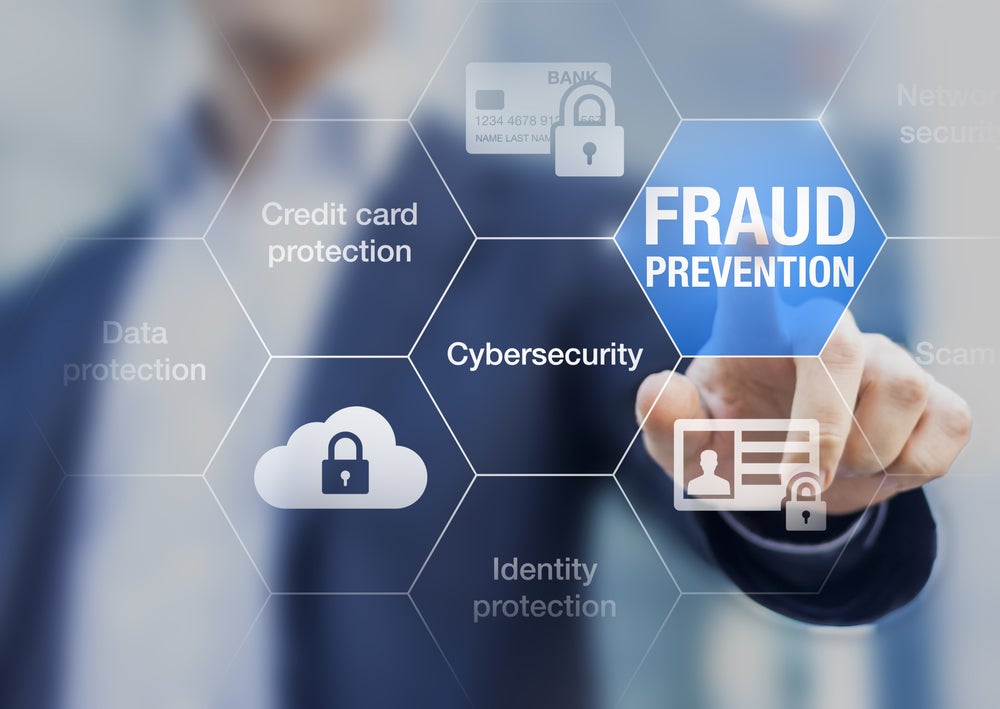MasterCard Europe’s Debit and Prepaid Conference, held
on 27-29 April, brought delegates from across the continent
together to discuss the state of the payments market and how they
are dealing with the financial crisis. John Hill reports from
Berlin on the main issues and successful offerings in the
market.

With prepaid card use expanding throughout Europe and continued
innovation in debit card issuance despite the financial crisis, it
was fitting the 2009 MasterCard Europe Debit and Prepaid Conference
should be themed around payments and profitability in turbulent
times.
The conference was attended by around 300 of Europe’s top card
industry players, from issuers and processors to public bodies and
government representatives, many of whom contributed their ideas
and opinions as to exactly where the industry was heading.
One of the issues surrounding the use of prepaid cards is their
relatively high fees, especially in comparison with debit which,
for the average consumer, has all the benefits and few of the
charges associated with prepaid. The users of mass-market prepaid
cards as a main payment method still seem to largely be the
unbanked and the uncreditworthy, although the use of increasingly
sophisticated prepaid products for gift and online purchases may
alter this.
Matt Lanford, senior business leader of Europe prepaid product
development for MasterCard, thinks views are changing.
How well do you really know your competitors?
Access the most comprehensive Company Profiles on the market, powered by GlobalData. Save hours of research. Gain competitive edge.

Thank you!
Your download email will arrive shortly
Not ready to buy yet? Download a free sample
We are confident about the unique quality of our Company Profiles. However, we want you to make the most beneficial decision for your business, so we offer a free sample that you can download by submitting the below form
By GlobalData“In terms of targeted markets, gift and online will always remain a
large proportion of the prepaid product, although there is also a
lot of interest in the corporate sector for payroll, which is
estimated to be worth €17 billion [$23 billion] by 2015,” he told
delegates.
“Travel and entertainment, expense management and government
benefits also present a large opportunity,”
Continuing challenge of education
“One of the biggest challenges we face at the moment is that of
education,” Lanford continued. “We are committed to getting out
into the market and educating people that prepaid is more than just
gift cards.
“There are many other applications and it can be used to solve key
business needs. For instance, social security cards, as well as
many of the local benefits programmes we have in the US are
demonstrating to the rest of the world that prepaid has a
place.”
Despite the relatively high costs to the consumer, possibilities
for the prepaid market are expanding as government and corporations
start to use the cards for various programmes, and Lanford thinks
the current situation will actually provide a lot of
opportunities.
“The recent downturn has given prepaid a positive outlook.
Consumers are now looking for ways to control their spend, as well
as to have more budgeting capabilities and prepaid provides them
with the tools to do that,” he added.
There were several discussions as to how innovation in prepaid has
helped to drive the market forward in the last year. Presentations
by European issuers suggested some of the possibilities for the use
of prepaid cards by corporate and government entities and
consumers, utilising the system for payroll, government benefits,
per diem expenses, corporate rewards and the replacement of
travellers cheques.
PostePay leads the way
Launched in 2003, Italy’s PostePay prepaid card now claims 65
percent of the prepaid market in Italy and 40 percent of that in
Europe, with 4.5 million cards in issue.
While primarily a mass-market prepaid card, the PostePay system has
been chosen by the Italian government via BancoPosta, the banking
arm of Poste Italiane, to issue benefits through prepaid cards, the
first European government to do so. Aimed at the aged (over 65) and
poorer families with children under three, the scheme has had a
take-up of an estimated 1.3 million individuals.
The initial benefits payment pilot is set to last from December
2008 to December 2009 and consists of €80 loaded on the card every
two months, with an initial €120 deposited when the card is first
activated.
To combat fraud as well as to control the spending of the
individuals given the card, the government has implemented limits
so that consumers can only use the card at certain locations and to
buy certain goods like food, medicine and pay utility bills, and
the cards cannot be used at ATMs. On the other hand, the scheme
does offer a discount at various locations to promote its use, with
some supermarkets offering 5-10 percent off goods bought.
Alberto Scaduto, Manager of Business and Public Administration at
BancoPosta, said this has changed consumer habits.
“We found that, when given the cards, some of the families would in
fact reduce their spending and actively search for some of the
discounts on offer, making a much better educated choice when they
went to the supermarket,” Scaduto said.
Pushing innovation in debit
Debit cards as a stand-alone product were all but missing from the
conference this year. More and more issuers seemed to be
concentrating on the idea of co-branding as well as adding other
features and applications onto their standard debit card, like
transport ticketing capabilities.
Propositions such as the Barclaycard OnePulse combined
transit/payment card were touched upon as well as combining a debit
card with a fully fledged reward scheme as in the PAYBACK/West LB
product in Germany.
Christoph Surel, director at Payback, spoke about the scheme,
launched in Germany in 2000, which started off as a reward card and
developed into a credit card with a reward function – a scheme it
ran in partnership with German bank West LB. The proposition then
became a debit/reward card.
According to Surel, the next step is to move to an open-loop
prepaid programme, which Payback is launching later this year as a
free Maestro card.
“We ask our members at regular intervals as to their wishes and
what they want in the way of new branches, partners, products,
services and features,” he said.
“This is how the programme works and how Payback is developed
further. Having listened to their responses, we conclude that our
members are clearly interested in the open-loop card. We always
make our decisions in a democratic process within the partner
management board.
“Payback partners appreciate this development because we can offer
their customers a more relevant product,” Surel added
The rewards system is set up so that when the customer uses the
card with one of Payback’s merchant partners, they receive points
which they can redeem for rewards at any of the other merchant
partners.
The scheme is supported by a targeted marketing campaign which
Surel believes has contributed in a large way to PAYBACK’s
success.
“We have defined the core target group for our TV advertising
campaigns as individuals between 29 and 55 years of age, which are
larger urban families with higher incomes,” he said. “We definitely
are an efficiency communication platform, with 96 million direct
mailings a year, 167 million e-mail newsletters, and 8,000 partners
at the point of sale.
“With every campaign and mailing and the responses we receive, we
can change our product in order to offer even more attractive
products and predict future customer reaction.”
As consumers are now looking look to combine several payment
functions onto a single card, Surel thinks it is important they are
able to use the card as freely as possible. Payback found that when
surveyed, features customers most desired on the card were
financial flexibility, general acceptance, cheap to use (ideally
free) and a high level of security. In the same survey merchant
partners of the scheme looked for no payment risk, and an increase
in customer loyalty and spending and contactless capability.
Changing consumer and technology trends
During the conference, MasterCard revealed a survey of its own,
echoing the views expressed by Surel and examining how the spending
habits of consumers are changing as they react to the financial
crisis.
Data within the report revealed that the majority of Europeans are
looking to rein in their spending, with up to 84 percent looking to
cut costs and 65 percent looking to save more.
While the figures themselves are not particularly surprising, it
means consumers are now looking for different features on their
debit cards.
Some 41 percent said they wanted loyalty programmes, 42 percent
wanted added security from internet fraud, and despite wanting a
higher general level of acceptability, at 33 percent, only 11
percent said they needed contactless functionality to be
present.
Mobile payments were also touched upon as issuers attempt to
simplify the purchasing process by integrating contactless
technology into a mobile phone.
One of the items discussed was the PayPass sticker that MasterCard
has started to promote in association with several banks. The
sticker attaches to any other object and can be used for
contactless ‘tap and go’ payments, using the PayPass system.
As well as the sticker there was a demonstration of the new types
of mobile that have the contactless chip inside them, which can be
used for both contactless payments as well as monitoring and
changing the balance of the accounts linked to the handsets.
In the past there has been some consternation as to the validity of
using mobile phones as contactless payment systems. Several issues,
including security (if the mobile phone is taken, it costs more
than simply replacing the handset), ease of use (another card is
still required to use an ATM) and functionality (sometimes the chip
cannot be used if the handset has no battery power) have all been
raised.
James Davlouros, product leader for MasterCard’s Europe and SAMEA
regions, believes the technology will prove itself given
time.
“We are doing various trials, which have been taking place for the
last two years in near-field-communications in the low hundreds.
You are about to see some in the thousands,” Davlouros told
delegates.
“In the Middle East, Africa, Asia and Europe you will see new
things arriving which will greatly enhance the business case for
mobile banking. Why will it happen? Everybody has a mobile handset
these days. Handsets aren’t used so much for voice as other things
like data, e-mail, calendar, contacts and media like music and
pictures are playing a big role in the mobile handset.
“Payments can now be seen as another enhancement as to how the
actual handset can be used.”
Davlouros went on to explain what he saw as the issues currently
facing the technology.
“The challenges today are not just the price, but availability,
consumer acceptance and acceptance at POS, which is another
challenge in its own right,” he said. “There are a lot of factors
that provide obstacles and reasons as to why the technology isn’t
out in the thousands in public, but it is early days.”
While mobile contactless as a technology may be still finding its
feet there are an increasingly large number of schemes that are
looking to use contactless technology on a standard card. Many of
the latter presentations at the conference were looking at the
possibilities that have arisen as PayPass becomes more widely
accepted.
Contactless takes centre stage

As contactless becomes more widespread, it presents problems to the
consumer. In terms of security, if a contactless card is lost the
thief no longer needs a PIN to be able to use it, and although a
new system asking for the PIN after five contactless transactions
has been implemented with PayPass, it still only limits the
liability to the user.
Alternatively, combining two functions on a card that would have
been separate in the past, transport and payment for example, has
its own issues. While it may make it more convenient to use one
card for both, this advantage to the consumer could be outweighed
by the problems caused if the card is lost.
Despite this, Luke Olbrich, senior business leader of SEPA
solutions at MasterCard Europe, says that mass transit is a good
place to get consumers accustomed to contactless.
“Transport is a natural place to start, like with the Citi card on
the New York metro,” Olbrich said. “Debit will truly become
ubiquitous when from the time you leave your house, go to work and
then get home, all you need is your card.”
Transport for London (TfL), operator of London’s public transport
system, is looking to attempt implement just such a system.
According to Will Judge, head of future ticketing at TfL, the
current Oyster card system within London, a contactless prepaid
system that relies on a reloading the card periodically, is due for
an overhaul.
Although TfL currently has a deal with UK bank Barclays for the
OnePulse card, the card itself is not performing two functions – it
still has to be reloaded (albeit automatically). TfL is looking to
produce something similar to that featured in the New York metro
PayPass trial, where any PayPass-enabled Citi card or contactless
tag could be used to access the metro system, and the ticket price
is taken straight out of the cardholder’s account.
Studies by TfL in 2007 showed that around 65 percent of Oyster
payments were made in cash. Judge said he thinks this could be
reduced if a more rapid payments system was implemented.
“We saw that the trial in New York actually had showed an increase
in usage as people realised that it was now so much quicker just to
hop on the train than they were used to,” Judge said.
“They didn’t have to fish for cash and queue to buy tickets, they
just flashed their cards and walked straight on.”
The New York study showed a 16 percent increase in ‘ridership’
during the trial and while one of the obstacles to implementing the
system in London is the variable price per journey, TfL believes
this can be overcome and any problems encountered would be greatly
outweighed by the benefits.
According to Judge, TfL would be able to cut costs as they reduced
the need for ticketing machines and staff to man them, while
customers would possibly see not only a reduction in queue times,
but a reduction in the price of travel as a reflection of the cuts
by TfL.
Olbrich explains contactless as he sees it.
“We are looking at an interim phase where it’s going to take a long
time to get the infrastructure in place for contactless,” he
said.
“However, currently the EMV chip is pretty well rolled out and it
allows for transactions that occur offline, which is historically
why merchants haven’t been keen to accept cards, especially when
combined with the costs and the online connection for smaller
payments.
“So, in the short term for the payments market, leveraging the EMV
chip and its offline capabilities is something we are looking
at.”








